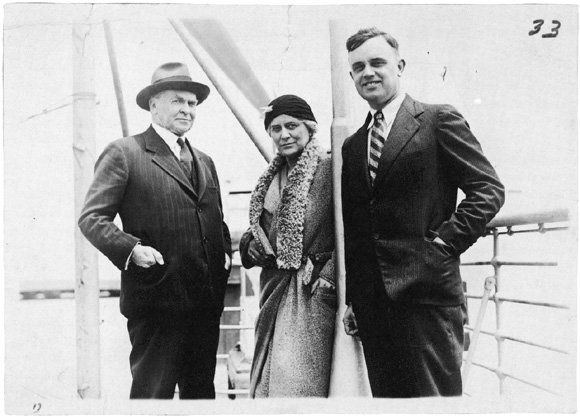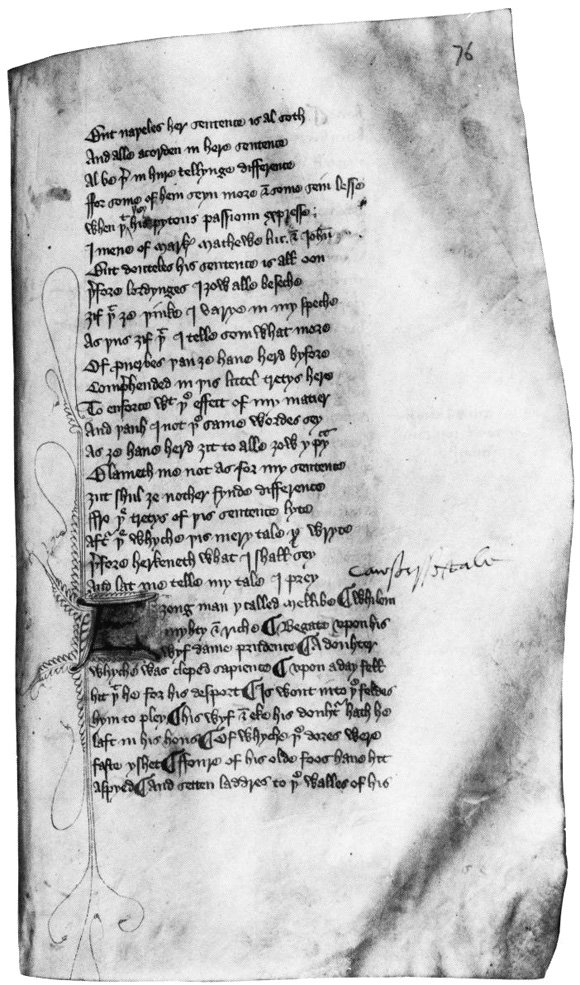John M. Manly (1865-1940) & Edith Rickert (1871-1938): English
Both Manly and Rickert brought a great deal of linguistic and cryptographic experience to the Chaucer project. During the First World War, Manly worked for the War Department on a decoding project that broke German codes and devised codes for the Allies. Aware of Edith Rickert's expertise as a student of language, Manly brought her to Washington to assist in the work. After the war, Manly returned to Chicago, and Rickert joined the English Department in 1924. From that time on, their lives centered on teaching and Geoffrey Chaucer.
By all measures, the Chaucer project was a monumental undertaking of scholarship, critical analysis, and data collection. Manly and Rickert's goal - to establish an authoritative text of the Canterbury Tales - involved collecting, photographing, and collating all existing Chaucer manuscripts and studying their provenance. A Chaucer textual laboratory was organized in Wieboldt Hall where a team of graduate students meticulously analyzed photostatic copies of the eighty-three fragments and complete manuscripts of the Tales found by Manly and Rickert. Lettering styles, paper markings, and types of ink were examined to find clues that might help establish each manuscript's origin.
During six months of each year, Manly and Rickert traveled to Britain and the Continent to examine original manuscripts held in museums and private collections. Here they looked for minute details such as ink changes, erasures, binding, and trimming techniques that might have escaped the camera's eye. As they worked, the project grew from a simple study of the manuscripts to one that encompassed a study of Chaucer's life and the times in which he lived. Manly and Rickert combed archives in England for traces of Chaucer's family and for any information that contributed to a more complete understanding of English culture in the fourteenth and fifteenth centuries.
Eventually, the Chaucer Project became a race against time, exhaustion, and depleted finances. Edith Rickert once said that if they worked like ordinary human beings, the work would never be completed. Funding problems were exacerbated by the Depression, and both Rickert and Manly suffered from physical exhaustion. For Rickert, the problems of ill health brought on by overwork prevented her from seeing the finished work. She died a few months before the first volume was published. For Manly, the Chaucer Project exacted a heavy toll as well, and he lived only long enough to see the written volumes in print .

Manly and Rickert taught at the University during the summer and autumn quarters and spent the remainder of each year in England. On this return voyage, they were joined by David Stevens, a colleague from the English Department.

Discovered by Manly and Rickert in the course of the Chaucer project, this mid-fifteenth-century codex is one of fifty-seven relatively complete manuscript copies of the Tales and one of only two containing a passage from the "Tale of Melibeus." It was given to the University Library in 1931 by Martin A. Ryerson.
